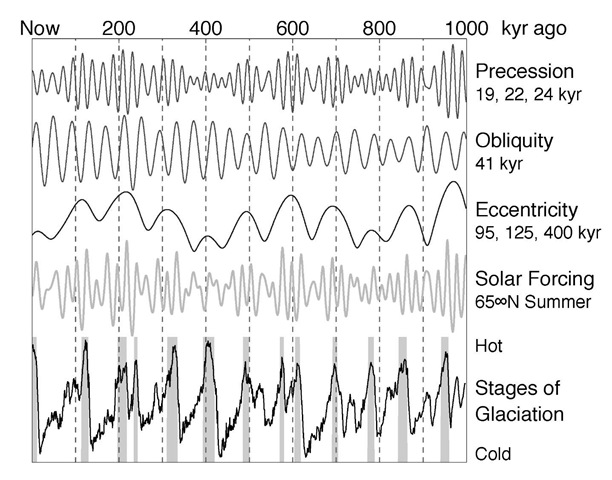Milankovitch Cycles
The Earth’s orbit around the sun is slightly elliptical. Over time the gravitational pull of the moon and other planets causes the Earth’s orbit to change following a predictable pattern of natural rhythms, known as Milankovitch cycles. Over a ~100,000 year cycle the Earth migrates from an orbit with near-zero eccentricity (a perfect circle) to one with approximately 6 percent eccentricity (a slight ellipse). In addition, the tilt of the Earth axis, known as its obliquity, varies from 21.5 to 24.5 degrees with a 41,000 year rhythm. And lastly, the orientation of the Earth’s axis rotates with a ~20,000-year cycle relative to the orientation of the Earth’s orbit. This cycle, known as "precession’, affects the intensity of the seasons.
The figure shows the pattern of changes in each of the three modes of orbital variability: eccentricity, obliquity, and precession. These changes in the Earth’s orbit lead to a complex series of changes in the amount of sunlight that a given location on Earth can expect to receive during a given season. An example is shown for summer sunlight near the Arctic circle. Sunlight at this location is believed to influence the growth and decay of ice sheets during ice ages. The last line shows measured changes in climate during the last million years with warm interglacials highlighted in gray bands. As can be seen, such interglacials appear to preferentially occur near maxima in eccentricity and slightly following times of maximum summer sunlight.

